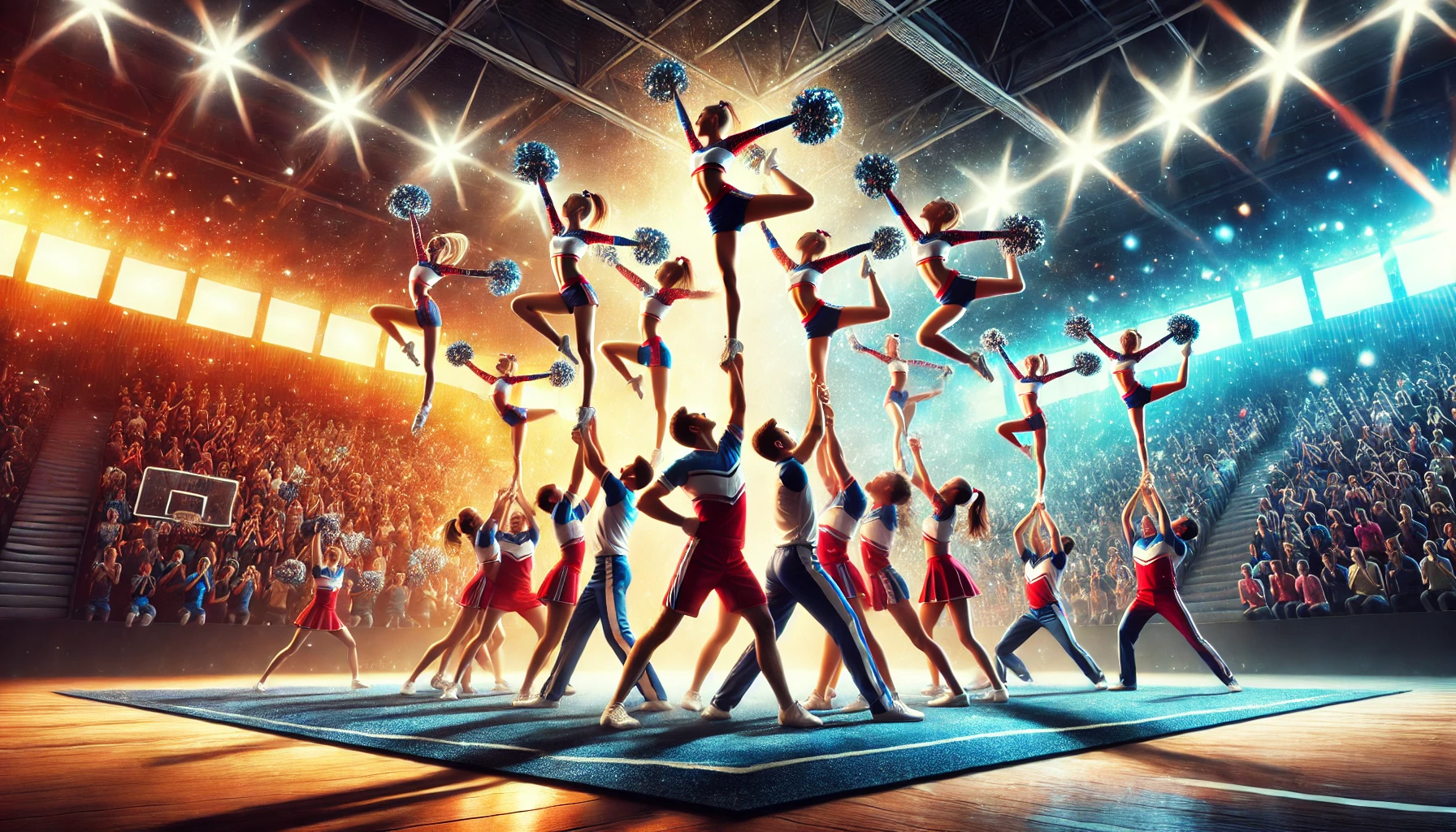Mastering Cheerleading: Essential Stunts, Routines, and Cheers for Every Squad
Cheerleading is more than just a sport; it’s an art form that combines athleticism, teamwork, and showmanship. Whether you’re new to the world of cheer or a seasoned veteran, mastering the essential elements like cheerleading stunts, routines, and cheers is crucial for success. This blog will guide you through the fundamental aspects of cheerleading, providing tips and insights to help you perfect your skills and shine on the mat.
Why Cheerleading Stunts Are the Heart of Every Routine
Cheerleading stunts are the show-stoppers of any routine. These gravity-defying feats of strength, balance, and coordination are what make cheerleading so thrilling to watch. But executing stunts safely and effectively requires careful preparation and practice.
Key Components of Successful Cheerleading Stunts
- Strength and Conditioning: Before attempting any stunt, it’s important to build the necessary strength and endurance. This includes working on core stability, leg strength, and arm strength. Regular conditioning exercises such as planks, squats, and push-ups will help build the foundation needed for lifting and holding stunts.
- Team Coordination: Cheerleading stunts rely heavily on teamwork. Flyers, bases, and spotters must work together seamlessly. Clear communication and trust among team members are essential. Practicing stunts slowly at first and gradually increasing speed will help ensure everyone is on the same page.
- Proper Technique: Technique is everything in cheerleading stunts. For bases, this means maintaining a stable and solid stance, while flyers need to focus on balance and body control. Spotters play a crucial role in ensuring safety and must always be vigilant and ready to assist.
- Safety First: Never underestimate the importance of safety in cheerleading. Always use mats when learning new stunts, and consider wearing protective gear such as wrist guards and knee pads. Coaches should supervise all stunt practices to prevent injuries.
Crafting Perfect Cheerleading Routines: Balancing Creativity and Precision
Cheerleading routines are where the sport’s artistry truly shines. A well-crafted routine combines stunts, tumbling, jumps, and dance elements into a seamless performance that captures the audience’s attention. Here’s how to create a routine that stands out.
Elements of a Winning Cheerleading Routine
- Start with a Strong Opening: The opening of your routine sets the tone for the entire performance. Start with an attention-grabbing sequence, whether it’s a high-flying stunt, an impressive tumbling pass, or a sharp dance move. This will engage the audience and judges from the get-go.
- Incorporate Variety: A great routine balances different elements—stunts, tumbling, jumps, and dance. Avoid overloading your routine with one type of element. Instead, aim for a dynamic mix that showcases your team’s versatility.
- Synchronization is Key: Precision and timing are critical in cheerleading routines. All movements should be synchronized, from the smallest dance move to the biggest stunt. Regular practice with the full team is essential to achieve perfect timing.
- End with Impact: Just as the opening is important, the closing of your routine should leave a lasting impression. End with a powerful stunt or a visually stunning pyramid that ensures your performance is memorable.
Energizing the Crowd with Cheerleading Cheers
Cheerleading cheers are more than just chants; they are the driving force behind a team’s spirit. Effective cheers are loud, clear, and full of energy, capable of rallying both the team and the crowd.
Creating Effective Cheerleading Cheers
- Keep it Simple and Repetitive: The best cheers are easy to follow and repeat. Simple phrases with strong, rhythmic beats work best. This makes it easier for the crowd to join in and keeps the energy high.
- Use Motion and Formation: Cheers aren’t just about words; the accompanying motions and formations are equally important. Incorporate sharp, clean movements that match the rhythm of the cheer. Creative formations can also add visual interest and make the cheer more impactful.
- Tailor Cheers to the Situation: Customize your cheers to suit the game situation. For instance, if your team is on defense, use cheers that encourage strength and resilience. If your team scores, use a cheer that celebrates and amplifies the moment.
- Practice Projection and Voice Control: A cheer is only effective if it’s heard. Practice projecting your voice from the diaphragm and ensure all team members are loud and clear. Voice control is especially important in maintaining energy throughout a long game.
Choosing the Right Cheerleading Uniforms and Shoes for Performance and Safety
The right cheerleading uniforms and shoes are essential for both performance and safety. Cheerleading uniforms should be comfortable, functional, and stylish, while shoes should provide the necessary support and grip for stunts and tumbling.
Selecting Cheerleading Uniforms
- Comfort and Flexibility: Cheerleading uniforms should allow for a full range of motion. Choose fabrics that are stretchy, breathable, and durable. Avoid materials that are too tight or restrictive, as they can hinder movement.
- Safety Features: Look for uniforms that include safety features such as secure fastenings and non-slip materials. Avoid accessories that could catch or snag during stunts.
- Team Identity: Uniforms are a key part of your team’s identity. Choose colors and designs that represent your team’s spirit and style. Customization options like embroidery or screen printing can add a personal touch.
Picking the Best Cheerleading Shoes
- Support and Cushioning: Cheerleading shoes should provide excellent support, especially around the ankles. Look for shoes with good cushioning to absorb impact during jumps and stunts.
- Grip and Traction: The soles of cheerleading shoes should have strong grip and traction to prevent slipping. This is particularly important for bases and spotters who need stability.
- Lightweight Design: Shoes should be lightweight to allow for quick movements and agility. Heavy shoes can slow you down and increase the risk of injury.
- Fit and Comfort: Ensure the shoes fit well, with no tight spots or areas of discomfort. Properly fitting shoes help prevent blisters and provide better overall support.
Preparing for Cheerleading Competitions: Tips for Success
Cheerleading competitions are the pinnacle of the sport, where teams showcase their skills and compete for top honors. Preparation is key to performing well at these events.
How to Prepare for Cheerleading Competitions
- Start Early: Begin preparing for competitions well in advance. This includes choreographing your routine, perfecting stunts, and ensuring all team members know their roles.
- Focus on Conditioning: Physical conditioning is essential in the lead-up to a competition. Work on strength, flexibility, and endurance to ensure your team is in peak physical condition.
- Mental Preparation: Competitions can be stressful, so mental preparation is just as important as physical training. Encourage team members to visualize their performance and practice mindfulness techniques to stay calm under pressure.
- Uniform and Equipment Check: Ensure all uniforms and equipment are competition-ready. Check that uniforms fit properly and that all shoes are in good condition. Bring extra supplies such as hair ties, tape, and safety pins.
- Review the Rules: Make sure your routine complies with the competition rules and guidelines. This includes the length of the routine, allowable stunts, and any specific regulations set by the competition organizers.
Understanding and Preventing Cheerleading Injuries
While cheerleading is an exciting and dynamic sport, it also comes with risks. Cheerleading injuries can occur, especially during stunts and tumbling. Understanding these risks and taking steps to prevent injuries is crucial for every cheer team.
Common Cheerleading Injuries and How to Prevent Them
- Sprains and Strains: These are the most common injuries in cheerleading, often affecting the ankles, wrists, and knees. Prevent them by incorporating strength and flexibility training into your routine and always using proper technique during stunts.
- Concussions: Head injuries can occur during falls or when stunts go wrong. To prevent concussions, always use spotters during stunts, ensure proper execution of skills, and consider using protective headgear for high-risk maneuvers.
- Fractures: Broken bones can result from falls or direct impact. Prevent fractures by using mats during practice, performing regular conditioning to strengthen bones, and ensuring all stunts are performed under supervision.
- Overuse Injuries: These occur from repetitive motions, particularly in the shoulders, knees, and lower back. Prevent overuse injuries by varying training routines, allowing adequate rest between practices, and addressing any pain or discomfort immediately.
Excelling in Cheerleading with the Right Skills and Preparation
Cheerleading is a challenging and rewarding sport that requires a combination of physical skill, mental toughness, and team coordination. By mastering cheerleading stunts, perfecting routines, choosing the right uniforms and shoes, and preparing thoroughly for competitions, you can elevate your performance and enjoy the sport to its fullest. Remember, safety should always come first, so take the necessary precautions to prevent injuries and keep your team in top form.
For more tips on cheerleading and other sports, visit Regent Studies for educational resources and expert advice.
External Link: For additional resources on cheerleading safety, check out this guide from the American Association of Cheerleading Coaches and Administrators (AACCA).




